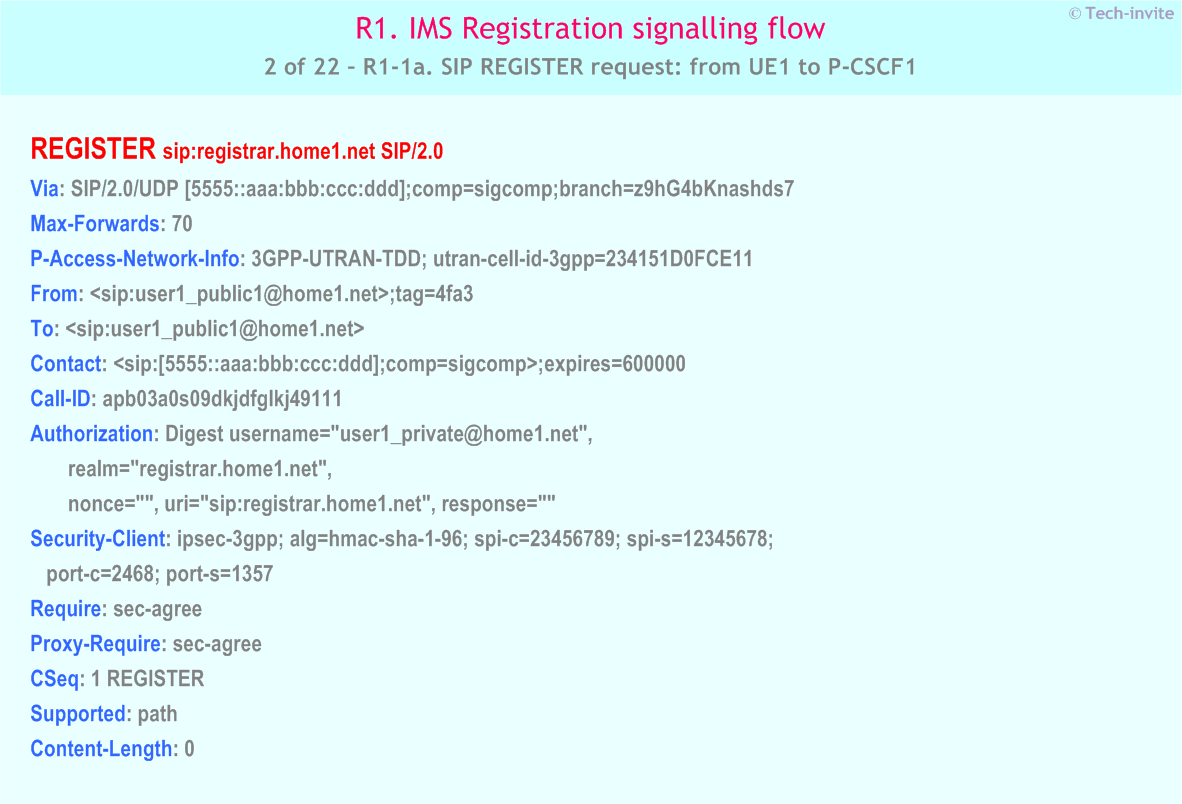back to TS 24.228

The purpose of this request is to register the user's SIP URI with a S-CSCF in the home network. This
request is routed to P-CSCF1 because it is the only SIP server known to UE1.
- Request-URI: The Request-URI (the URI that follows the method name, "REGISTER", in the first line) indicates the destination domain of this REGISTER request. The rules for routing a SIP request describe how to use DNS to resolve this domain name ("registrar.home1.net") into an address or entry point into the home operator's network (the I-CSCF). This information is stored in the USIM.
- Via: IPv6 address of the UE allocated during the PDP Context Activation process.
- P-Access-Network-Info: UE1 provides the access-type and access-info, related to the serving access network.
- From: This indicates the public user identity originating the REGISTER request. The public user identity may be obtained from the USIM.
- To: This indicates the public user identity being registered. This is the identity by which other parties know this subscriber. It may be obtained from the USIM.
- Contact: This indicates the point-of-presence for the subscriber - the IP address of UE1. This is the temporary point of contact for the subscriber that is being registered. Subsequent requests destined for this subscriber will be sent to this address. This information is stored in the S-CSCF.
- Authorization: It carries authentication information. The private user identity (user1_private@home1.net) is carried in the username field of the Digest AKA protocol. The uri parameter (directive) contains the same value as the Request-URI. The realm parameter (directive) contains the network name where the username is authenticated. The Request-URI and the realm parameter (directive) value are obtained from the same field in the USIM and therefore, are identical. In this example, it is assumed that a new UICC card was just inserted into the terminal, and there is no other cached information to send. Therefore, nonce and response parameters (directives) are empty.
- Security-Client: Lists the supported algorithm(s) by UE1.
- Supported: This header is included to indicate to the recipient that UE1 supports the Path header.